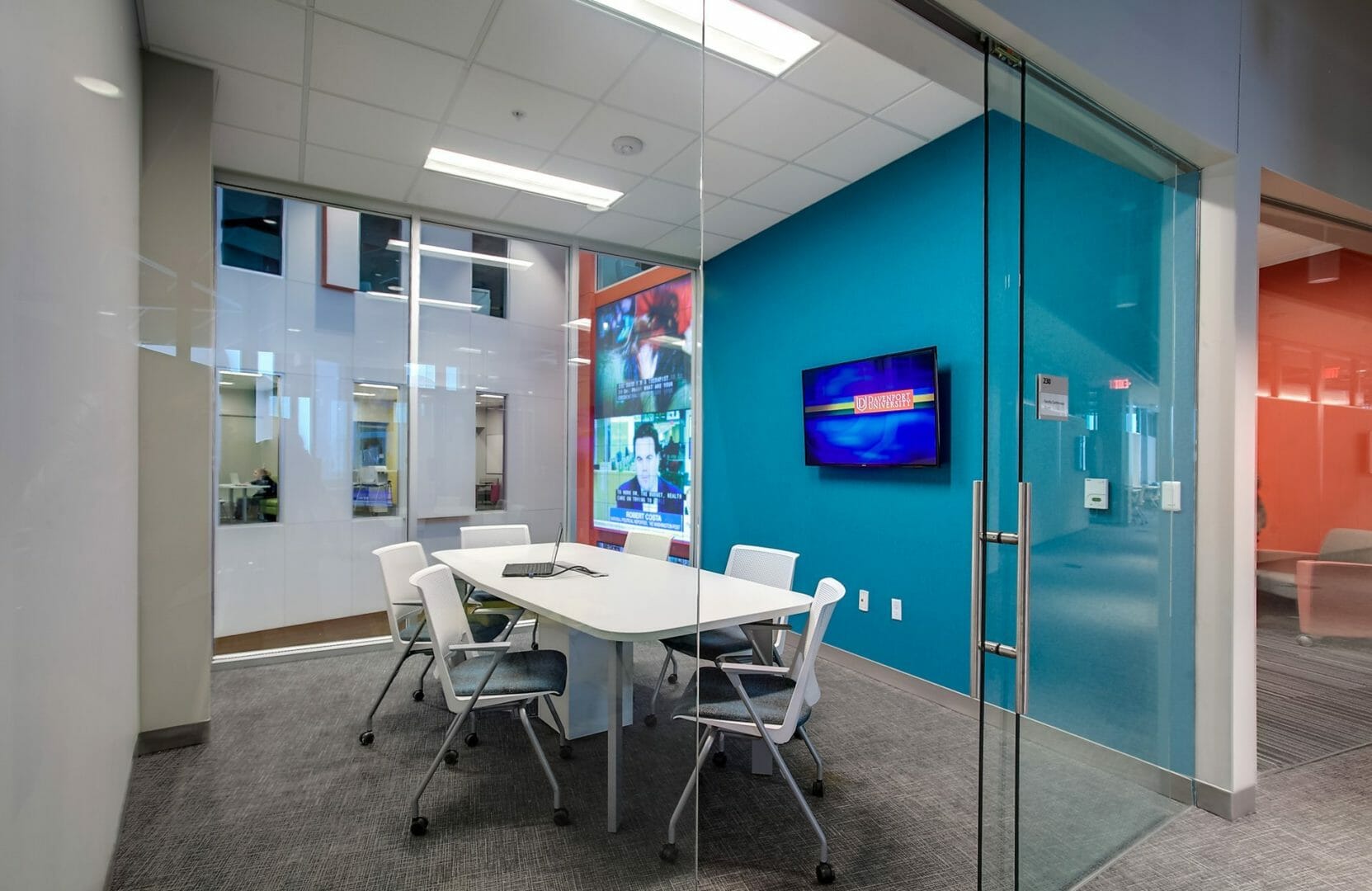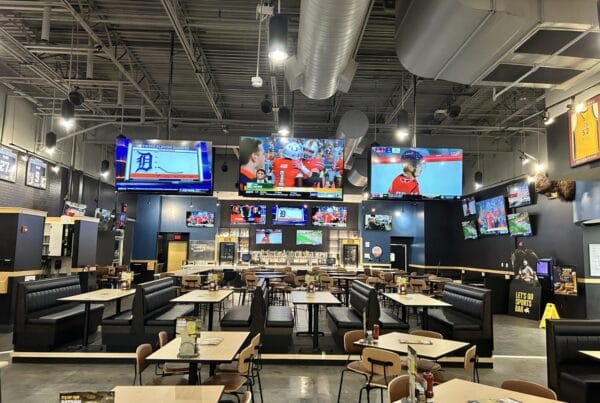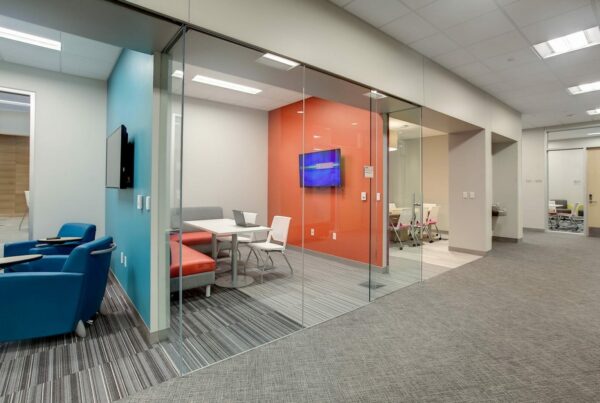In a recent post, we discussed one tech trend we’ve been seeing recently: the miniaturization of the conference room. More and more, we’re seeing entire racks of legacy equipment being replaced by smaller, more powerful multifunction devices like those from Crestron.
Out of that discussion came another important question regarding conference room technology. When is the right time to consider refreshing your conference room audiovisual (AV) setup? We lamented last time that too many companies wait far too long, but what’s the right amount of time to wait?
Our Audiovisual Technology Rule of Thumb
If your business is looking to stay current and relevant, then our typical guideline is to do a full refresh to the audio-visual equipment in your huddle rooms and conference rooms every three to four years. By maintaining a refresh rate like this, you can ensure that all of the technology is completely cutting edge, and your employees and clients will notice. Nothing will ever fall more than two or three years out of date, which is the typical rate manufacturers like to upgrade “feature-functionality” for their products.
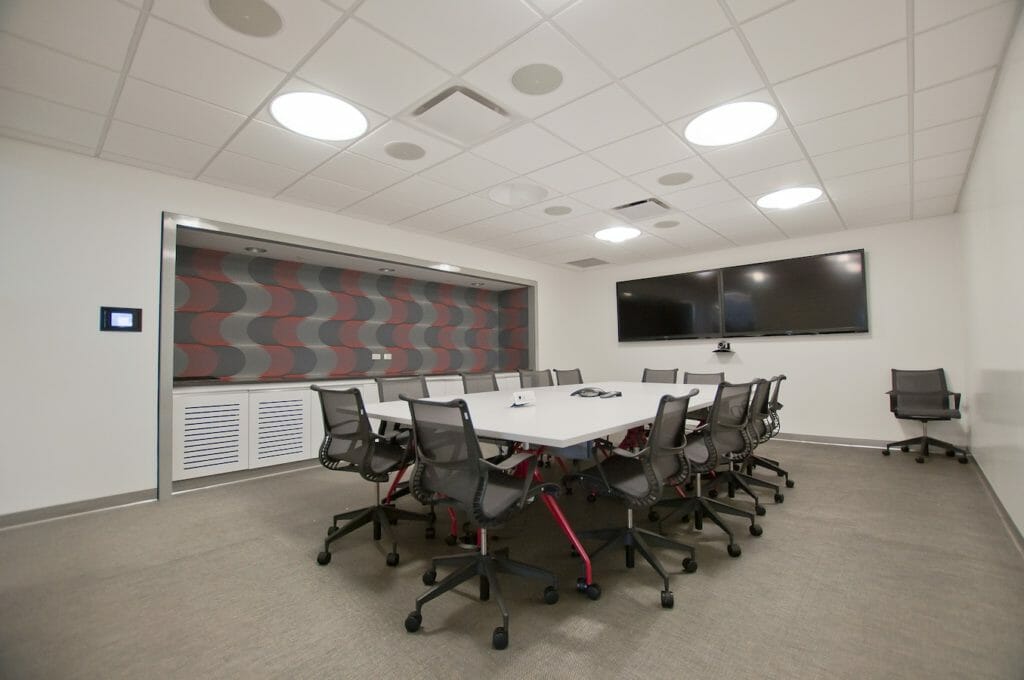
Why Updating Meeting Spaces Matters
Collaboration Spaces Make Big Impressions
First, you want to convey to your employees that you are keeping up with recent developments and that you’re a modern company. Keeping technology up to date throughout your place of work (including in the conference rooms) is a requirement to maintain this image and recruit and attract top talent to your organization. However, it’s not only internal employees that notice office technology. Your visitors — customers, vendors, suppliers, partners, and clients — all notice office technology. We recently had a Fortune 100 executive in our office who told us, “office AV has become the book cover for me that I judge companies on in the first 30 seconds I walk in.” He really isn’t wrong. Your AV setup can be a talking point when external stakeholders leave your office and it shows that you care about the people you meet with. Companies need to be mindful that their conference room technology can largely influence those conversations and whether or not they are perceived as a forward-thinking business that cares or a regressive one that could care less.
Good Conference Call Video and Audio Quality
Second, consider how your conference rooms are used. If you’re like most companies, you use the conference rooms to meet with various outside vendors remotely through a video conference as well. You may even use them for in-depth customer interactions across the globe, depending on the nature of your business. What does it say to those vendors or customers if your meeting rooms not only look like they’re stuck in the ’90s but that the video call itself has connectivity issues or, worse yet, doesn’t work at all? It says your company is outdated, too. Audio clarity and the crispness of video in what appears to be a cutting-edge office space are vital to keeping your workforce productive and distraction-free.
All-in-One Audiovisual System Management
Finally, keeping the conference room and huddle space AV current gives you the most flexibility in those spaces, both for real-time collaboration and for virtual meetings. Your team members can use the latest collaboration tools, such as projectors, screen sharing, soundbars, video walls, and interactive whiteboards to increase their output, efficiency, and morale. You never want your employees to worry about reliability. Refreshing your conference room equipment every three to four years makes certain those worries are gone!
The quality of your virtual meetings is another major factor. The more we see businesses relying on contractors and vendors, the more important well-functioning conference rooms become. And if your company is like most, you’re more reliant than ever on conferencing software, such as Zoom, Google Meet, Microsoft Teams, and Skype. You want your video conferencing technology to be as high-quality, clear, and effective as possible, including intuitive control systems, such as plug-and-play connectivity and HDMI access for easy content sharing.
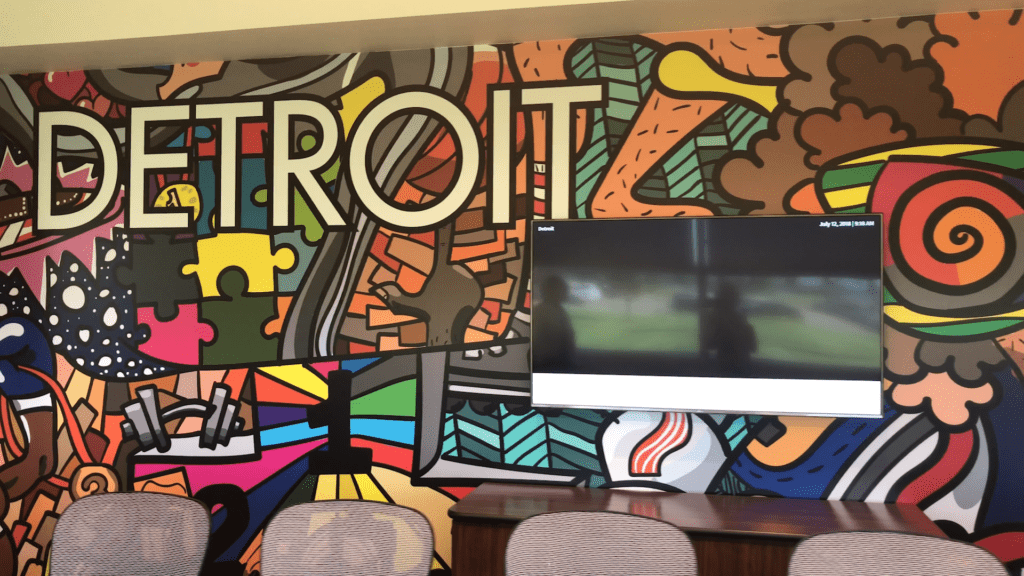
If You’re Planning a Full Office Refresh or Relocation
Another aspect worth discussing is what to do if your business plans on reworking its entire space. Whether this is a full office refresh, a relocation, or a new build, you want to get your AV integration team in the room from the beginning. This is the perfect time to refresh your audio and video conferencing systems and potentially dated technology.
Remember that an experienced AV team will do its best work during the designing and building phases of a renovation or new build project. It’s one thing to upgrade the technology in an existing space but another to be involved from the beginning. Involvement at the outset gives the AV team control over network infrastructure and behind-the-wall cabling while it is planned and built out, whether for small spaces or large conference rooms.
So if your company is planning a renovation or new build, don’t wait until the facility is complete to figure out your conference room AV needs (or any other audio-visual or tech needs). Always include your AV vendor in the planning meetings to get the best possible outcome in terms of infrastructure and equipment.
Another Option: Conference Room as a Service
If the cost of upgrading your conference room AV seems like it’s too expensive (or too often) for your budget, another option is to pay for it monthly as a service. In short, as a service covers your installation, maintenance, and a refresh at the end of the term to make certain that you always have the latest and greatest conference room AV system.
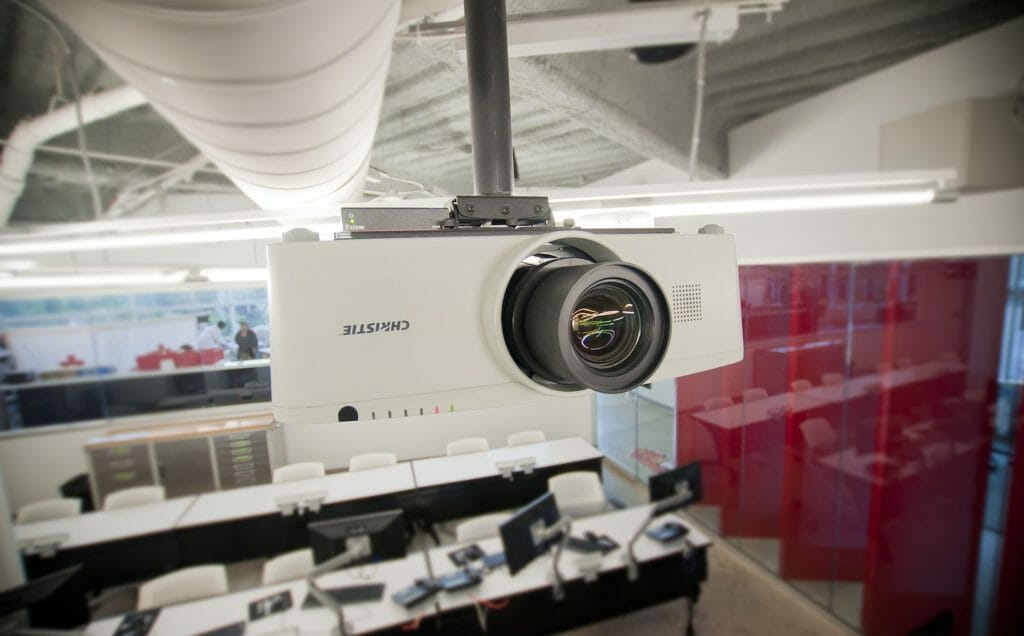
Ready to Upgrade?
If your conference room AV technology is over four years old, it’s time to upgrade. Additionally, if your business is planning a full office refresh, a relocation, or a new build, you want to make sure all collaboration spaces are done right. Contact Bluewater to talk about our conference room AV solutions.


